Celebrating 150 Years
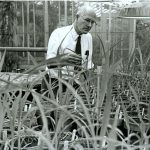
George W. Beadle (1903-1989)
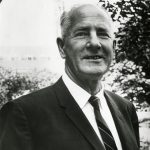
Nebraska’s Beadle Center for Genetics and Biomaterials Research – home to programs in biotechnology, biosciences and plant sciences – honors alumnus and geneticist George W. Beadle, who shared the 1958 Nobel Prize in Physiology or Medicine. Beadle may have become a farmer at his native Wahoo, Nebraska, had his teachers not pushed the bright student toward higher education. He earned a bachelor’s degree in agriculture from Nebraska in 1926 and a master’s in 1927. At Nebraska, he worked with professor F.D. Keim, a protégé of the great botanist Charles Bessey, on wheat breeding. Keim secured Beadle a position at Cornell University with R.A. Emerson, another Bessey protégé, for research confirming Mendelian genetics of corn. Beadle earned a doctorate in 1931 from Cornell. The research that earned the Nobel Prize was conducted at Stanford University in the late 1930s and early 1940s. With co-recipient Edward Tatum, Beadle proved that genes govern formation of enzymes and that each enzyme corresponds to specific genes; thus genes act by regulating chemical events. This research established the link between biochemistry and genetics, laying groundwork for the development of molecular biology. Beadle became chancellor and then president of the University of Chicago in 1961, serving until 1968.
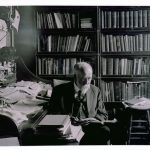
Charles Bessey (1845-1915)
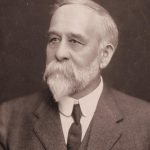
Pioneering botanist Charles Bessey changed the university’s early trajectory when he arrived in 1884. He believed in experimentation to benefit agriculture. He wrote critical parts of the 1887 Hatch Act, which established agricultural experiment stations at land-grant universities and provided annual federal funding support. An exceptional scientist, teacher and administrator, Bessey established Nebraska’s botany program. He taught more than 4,000 students over his career; 800 are said to have made significant contributions to science. Bessey mentored scientists who developed the disciplines of Plains ecology and range management, and advanced the fields of agronomy, plant genetics and crop physiology. Bessey devised a plant taxonomy system based on evolutionary principles that, with some revisions, is still used. His tree-planting experiment led to establishing the Nebraska National Forest, the world’s first artificial national forest. He published more than 150 papers and two textbooks; edited two leading journals, American Naturalist and Science; and was president of the American Association for the Advancement of Science. Nebraska’s Bessey Hall, completed after his death, bears his fingerprints. He laid out the building so labs would benefit from natural light. Since 2001, Charles Bessey professorships recognize faculty for exceptional scholarship and creative activity. The university also awards the Bessey Medal in recognition of distinguished achievement in the sciences and related fields. In 2009, Bessey was named to the Nebraska Hall of Fame.
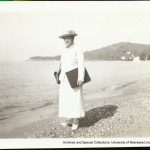
Willa Cather (1873-1947)
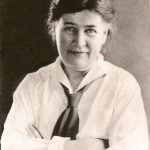
Author Willa Cather is among Nebraska’s most significant graduates. Born in Virginia, she moved with her family to Nebraska at age 9. Cather entered the university intending to become a physician, but writing soon consumed her interests. Active in campus life, she was friends with peers Louise and Roscoe Pound, edited the student newspaper and wrote for local newspapers. After graduating in 1895, she moved to Pittsburgh and then New York City as managing editor for McClure’s, a leading magazine. In 1913, she published “O Pioneers!,” which captured the spirit of immigrant farmers who settled the Plains, following with “The Song of the Lark” and “My Ántonia.” She won the Pulitzer Prize for literature in 1923 for “One of Ours.” Strong Cather threads weave through humanities scholarship at Nebraska. With extensive Cather research and scholarship and a rich archive of Cather materials, Nebraska is home to the collaborative Willa Cather Archive, an internationally recognized digital resource for studying Cather’s life and writings. The University of Nebraska Press publishes numerous Cather titles, scholarly editions and books about the author. In 2013, University Libraries Professor Andrew Jewell and Texas scholar Janis Stout co-edited “The Selected Letters of Willa Cather,” the seminal collection of Cather’s letters that is part of the Willa Cather Archive. Since 2001, Willa Cather professorships recognize faculty with exceptional records.
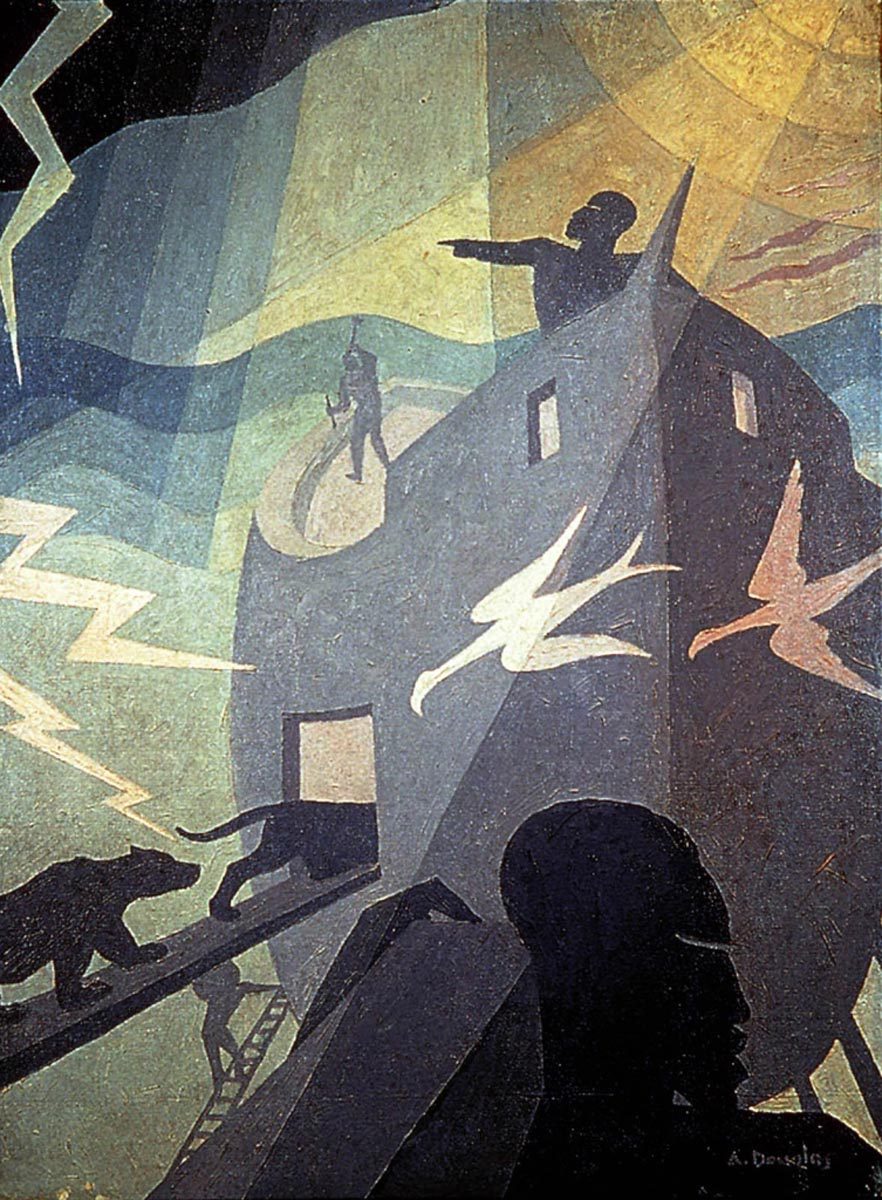
Aaron Douglas (1899-1979)
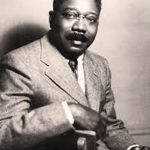
A premier artist of the Harlem Renaissance, Aaron Douglas was the first African American to earn a degree in fine arts from Nebraska. A Kansan, Douglas was barred from college in his home state and worked as a laborer in Detroit before entering the university. After graduating in 1922, he taught high school art in Kansas City, Missouri. He moved to New York City in 1925, where he worked with other artists, was associated with civil rights activist W. E. B. DuBois and did illustrations for magazines published by the NAACP and Urban League. His murals, illustrations and graphic design, considered seminal to the Harlem Renaissance, remain enduring and important. Combining traditional African and African American images with the prevailing cubist and art deco stylings to explore themes of racism, segregation and modern society, he created a distinctive and imaginative visual form and a new black aesthetic. Douglas eventually moved to Nashville, Tennessee, where he founded the art department at Fisk University, teaching there from 1937-1966. Leading museums, including Nebraska’s Sheldon Museum of Art, hold his work. In 2008, the university established the Aaron Douglas Professorship for Teaching Excellence in his honor.
Rachel Lloyd (1839-1900)
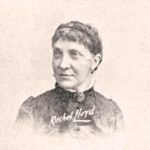
Pioneering chemist Rachel Lloyd joined the Nebraska faculty in 1887, the second member of the chemistry department and the only one to hold a doctorate at that time. She was the first American woman to earn a doctoral degree in chemistry, granted in 1887 from the University of Zurich in Switzerland, where she had studied because women were barred from earning doctorates in the United States. At Nebraska, her research on sugar beet content and how to improve varieties laid groundwork for Nebraska’s sugar beet industry. In 1889, she was elected a fellow of the American Association for the Advancement of Science. Lloyd founded several organizations in Lincoln, including the Nebraska Academy of Sciences, the Nebraska Local Section of the American Chemical Society and the Haydon Art Club of the University of Nebraska, a precursor to today’s Sheldon Art Association. Lloyd suffered numerous illnesses and poor health prompted her resignation in 1894, which was accepted with regret. Information about Lloyd’s life comes mostly from a biography written by her brother-in-law. A copy of this long-lost book was recovered in 2014 from a time capsule laid in 1916 in Avery Hall. To commemorate Lloyd’s achievements, the American Chemical Society presented Nebraska with its first National Historic Chemical Landmark.
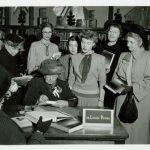
Louise Pound (1872-1958)
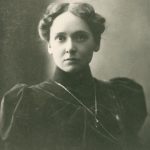
A distinguished scholar, athlete, musician and women’s sports advocate, Louise Pound worked to preserve Nebraska’s native folklore and pioneered studies in philology, a combination of literary criticism, history and linguistics used to study language in written and historical contexts. She received a bachelor’s degree in 1892 and a master’s in 1895 from Nebraska. When American universities would not admit her, Pound earned her doctorate in Heidelberg, Germany. She returned to Nebraska and taught in the English department for nearly half a century. As a scholar, Pound crusaded for the serious study of American English, founding the field’s leading journal. She was the first woman president of the Modern Language Association. She also fought to open athletic and professional opportunities for women. Pound established the Black Masque, a senior women’s honor society, later known as Mortar Board. A lifelong athlete, she won numerous golf, tennis and cycling championships. Pound was part of a distinguished Nebraska family that included her brother, Roscoe, prominent legal scholar and dean of Harvard Law School, and sister Olivia, a highly regarded educator. The former College of Business Administration building was renamed Pound Hall in 2018 to honor Louise Pound. The original Pound Hall, a residence hall, was demolished in 2017.
Mari Sandoz (1896-1966)
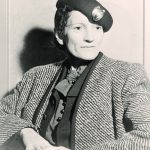
One of the state’s most respected authors, Mari Sandoz lacked a high school diploma, and while she enrolled at Nebraska in 1922, she never earned a degree. But her more than 20 books and dozens of short stories earned her a place in the state’s pantheon. Her biography of her father, “Old Jules” (1935), and works such as “Crazy Horse: The Strange Man of the Oglalas” (1942) and “Cheyenne Autumn” (1953) won her acclaim as a writer and chronicler of the settlement of the West and as a champion of Native Americans. Her childhood on a western Nebraska homestead, terrorized by her violent and erratic father, Jules Sandoz, informed her lifelong concern for poor people, women and those who were dispossessed of land. Her works are notable for extensive and detailed research. Sandoz reportedly received more than 1,000 rejection letters for her works and burned 70 of her manuscripts in frustration. The university conferred an honorary degree in 1950 and its archives hold much of her research collection. Many of her works are in print, published by the University of Nebraska Press. A university residence hall is named for Sandoz.
Theodore C. Sorensen (1928-2010)
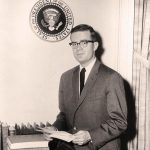
Theodore C. “Ted” Sorensen earned his bachelor’s degree in 1949 as a Phi Beta Kappa and his law degree in 1951, both from Nebraska. He moved to Washington, D.C., where he worked for newly elected Massachusetts U.S. Sen. John F. Kennedy as a researcher, then trusted adviser and speechwriter. He contributed to Kennedy’s 1956 book “Profiles in Courage,” and reportedly penned the famous line: “Ask not what your country can do for you, ask what you can do for your country.” Sorensen left the White House soon after JFK’s 1963 death. He joined a New York law firm. As an international lawyer, he advised governments, multinational organizations and major corporations. He also wrote the bestselling biography “Kennedy.” He advised Robert F. Kennedy during his ill-fated 1968 presidential campaign. Sorensen frequently visited Nebraska, delivering lectures and participating in other activities. The university conferred an honorary degree in 1969.
Sorensen Family
Other Sorensen family members are prominent in the university’s history. Father C.A. Sorensen was twice Nebraska’s attorney general and wrote the enabling legislation for public power in the state. Mother Annis Chaikin Sorensen, once a university employee, led the movement to put women’s suffrage on Nebraska’s ballot. In 1969, the family endowed a humanities teaching award in her name. The College of Journalism and Mass Communications presents an annual lecture endowed and named in honor of brother Thomas C. Sorensen, noted journalist and alumnus (B.A. 1947; honorary degree, 1996).
Clayton K. Yeutter (1930-2017)
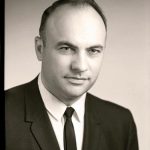
Clayton Yeutter intended to farm after earning a bachelor’s degree from Nebraska in 1952. Instead, he joined the U.S. Air Force and earned a law degree and doctorate in agricultural economics from Nebraska in 1963 and 1966, respectively, while also managing his farm and ranch operation. He then launched a career that included serving as CEO of the Chicago Mercantile Exchange and holding three cabinet- or sub-cabinet-level posts for four U.S. presidents. As U.S. trade representative for President Ronald Reagan, he began the Uruguay Round of multilateral trade negotiations in 1986, which resulted in creation of the World Trade Organization. His work laid the groundwork for the North American Free Trade Agreement. He was secretary of agriculture for President George H.W. Bush and later served as a senior domestic adviser. Yeutter’s gift to the University of Nebraska Foundation established the Clayton K. Yeutter Institute of International Trade and Finance at Nebraska. Launched in 2015, the institute prepares students to work in interconnected global economies. A statue of Yeutter was dedicated on East Campus in 2014, one of four honoring Nebraskans who have served as U.S. secretary of agriculture. The others are Clifford Hardin, Mike Johanns and J. Sterling Morton.
